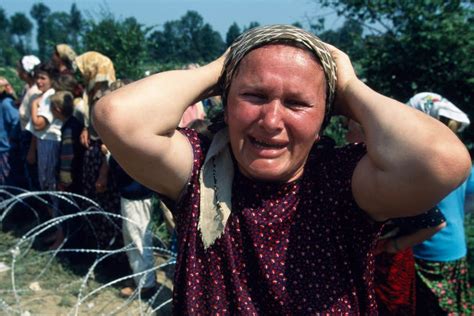Introduction: The Perpetrator’s Perspective
Ethnic cleansing, a systematic and deliberate attempt to remove a particular ethnic group from a territory, has haunted human history for centuries. From the forced expulsions of the Huguenots from France to the horrors of the Holocaust, this abhorrent practice remains a grim reminder of the depths of human cruelty. This article delves into the complex socio-geographic factors that contribute to ethnic cleansing, examining its causes, consequences, and potential solutions.

Mapping the Motivations
Perpetrators of ethnic cleansing often justify their actions through a distorted lens of historical grievances, perceived threats to cultural identity, and political expediency. Territorial disputes, ethnic rivalries, and economic competition can fuel the desire to eliminate rival groups, fostering a climate of fear and hatred.
Historical Precedents and Contemporary Manifestations
The annals of history are replete with examples of ethnic cleansing, each with its own unique set of circumstances. The Armenian Genocide of 1915-1917, the partition of India in 1947, and the Rwandan Genocide of 1994 stand as particularly chilling examples. In recent years, ethnic cleansing has reared its ugly head in the conflicts in Bosnia-Herzegovina, Kosovo, and Myanmar.
The Devastating Consequences
Ethnic cleansing leaves an indecipherable scar on societies, disrupting social relationships, destroying cultural heritage, and displacing millions of innocent lives. The United Nations High Commissioner for Refugees (UNHCR) estimates that there are currently over 25 million internally displaced persons (IDPs) worldwide due to ethnic conflict.
Disruption of Social Cohesion
By creating a binary division between ethnic groups, ethnic cleansing tears at the fabric of society, fostering suspicion, hostility, and fear. It erodes trust and undermines social capital, making it difficult for communities to rebuild after the violence has ended.
Destruction of Cultural Heritage
Ethnic cleansing often involves the deliberate targeting of cultural symbols and sites, such as religious buildings, historical monuments, and libraries. This destruction aims to erase the identity and history of the targeted group, leaving a lasting wound on the collective memory.
Population Displacement
One of the most immediate and visible consequences of ethnic cleansing is the mass displacement of populations. Forced to flee their homes in fear of violence or persecution, refugees often become marginalized and vulnerable, facing challenges in accessing basic services, such as healthcare, education, and shelter.
The Role of Geography
The geography of a region can play a significant role in shaping the dynamics of ethnic cleansing. The presence of natural boundaries, such as rivers or mountains, can facilitate the separation of conflicting groups. Conversely, porous borders can make it difficult to control the movement of people and goods, leading to increased tensions and conflict.
The Impact of Regionalism
Political and economic disparities between regions within a country can exacerbate ethnic tensions. Economic marginalization and social discrimination can create a sense of grievance among minority groups, making them more susceptible to extremist ideologies and violence.
The Role of Borders
Borders have the potential to both divide and unite people. In the context of ethnic cleansing, borders can become barriers that confine and restrict the movement of targeted groups. They can also serve as focal points for conflict, as rival groups seek to control territory or prevent the entry of refugees.
Addressing the Scourge of Ethnic Cleansing
Combating ethnic cleansing requires a multifaceted approach that addresses both the root causes and the consequences of violence. The following strategies are crucial:
Prevention
Preventing ethnic cleansing requires a proactive approach that fosters inclusive societies and addresses the underlying drivers of conflict. This includes promoting dialogue, reconciliation, and understanding between different ethnic groups through education, media campaigns, and community outreach programs.
Protection
International law provides a framework for protecting civilians from ethnic cleansing. States have a responsibility to protect their citizens from genocide, crimes against humanity, and other serious violations of human rights. Early warning systems, peacekeeping missions, and humanitarian assistance are essential tools for preventing and mitigating the effects of ethnic cleansing.
Prosecution and Accountability
Accountability for perpetrators of ethnic cleansing is critical for deterring future atrocities. Perpetrators should be prosecuted and punished for their crimes, regardless of their position or authority. International tribunals and special courts, such as the International Criminal Tribunal for the former Yugoslavia (ICTY), play a vital role in ensuring justice and upholding the rule of law.
Rebuilding and Reconciliation
After the violence has ended, it is essential to focus on rebuilding shattered societies and fostering reconciliation. This includes providing assistance to refugees and IDPs, facilitating the return of displaced persons to their homes, and promoting dialogue and cooperation between different ethnic groups.
Conclusion: A Call to Collective Action
Ethnic cleansing remains a grave threat to peace and stability around the world. It is a crime against humanity that must be condemned and prevented by all means possible. By understanding its causes, consequences, and potential solutions, we can work together to create a world where all people live in peace, free from the horrors of ethnic cleansing.
